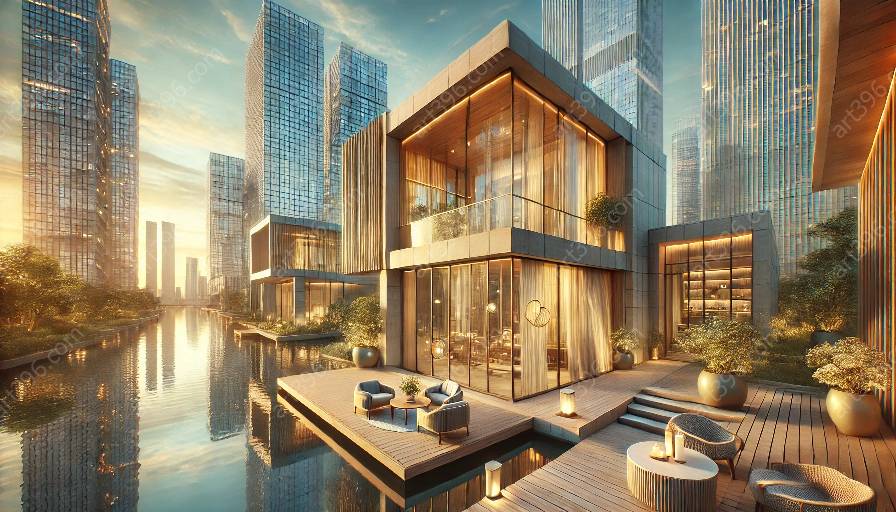As the world is increasingly focused on environmental sustainability, the fields of architecture and building materials play a critical role in shaping a greener future. Sustainable design principles and material selection are key components of this movement, aiming to minimize the environmental impact of buildings and construction processes. This comprehensive guide explores the fundamental concepts and techniques of sustainable design in architecture and building materials. From eco-friendly practices to resource-efficient methods, this topic cluster provides valuable insights into creating environmentally friendly structures and spaces.
Sustainable Design Principles
Sustainable design principles are the foundation of eco-friendly architecture and construction. They encompass a range of concepts and strategies aimed at reducing the environmental impact of buildings while promoting a healthy, efficient, and aesthetically pleasing built environment. Key principles include:
- Energy Efficiency: Designing buildings to minimize energy consumption and maximize efficiency through passive strategies, insulation, and renewable energy systems.
- Material Selection: Choosing environmentally friendly and locally sourced materials to minimize the carbon footprint of construction projects.
- Water Conservation: Implementing systems and technologies to reduce water usage and promote sustainable water management.
- Waste Reduction: Designing for disassembly, reuse, and recycling of building materials to minimize waste generation and promote a circular economy.
- Biophilic Design: Incorporating nature-inspired elements into the built environment to enhance occupant well-being and connection to the natural world.
Material Selection
Material selection plays a pivotal role in sustainable design and construction. Choosing the right building materials can significantly impact the environmental performance and overall sustainability of a building. Key considerations for material selection include:
- Recycled and Recyclable Materials: Opting for materials with high recycled content and those that can be easily recycled at the end of their lifespan.
- Low Embodied Energy: Selecting materials with low embodied energy, which refers to the total energy consumed during their extraction, manufacturing, transportation, and installation.
- Durable and Long-Lasting: Prioritizing materials with longevity and low maintenance requirements to minimize the need for frequent replacement and repairs.
- Renewable and Biodegradable Materials: Utilizing renewable resources and biodegradable materials that have minimal environmental impact and can be replenished naturally.
- Passive Design Strategies: Incorporating passive solar design, natural ventilation, and daylighting to reduce energy demand and enhance occupant comfort.
- Green Building Certification: Adhering to established green building standards and certifications to ensure the sustainable performance of a structure.
- Design for Deconstruction: Designing buildings and components for easy disassembly and material reuse at the end of their life cycle.
- Smart and Innovative Materials: Exploring the use of advanced materials, such as phase change materials, aerogels, and self-healing concrete, to improve building performance and sustainability.
- Life Cycle Assessment: Conducting life cycle assessments to evaluate the environmental impacts of materials and construction processes throughout the entire life cycle of a building.
Building Materials and Methods
The integration of sustainable design principles with building materials and methods is crucial for creating environmentally responsible structures. This involves employing innovative techniques and technologies that reduce resource consumption, minimize waste, and enhance the overall performance of buildings. Key areas of focus include:
By integrating sustainable design principles and material selection with innovative building materials and methods, architects, engineers, and construction professionals can contribute to a more sustainable and resilient built environment. Embracing eco-friendly concepts and resource-efficient practices not only reduces the environmental footprint of buildings but also enhances the well-being of occupants and communities.





























































